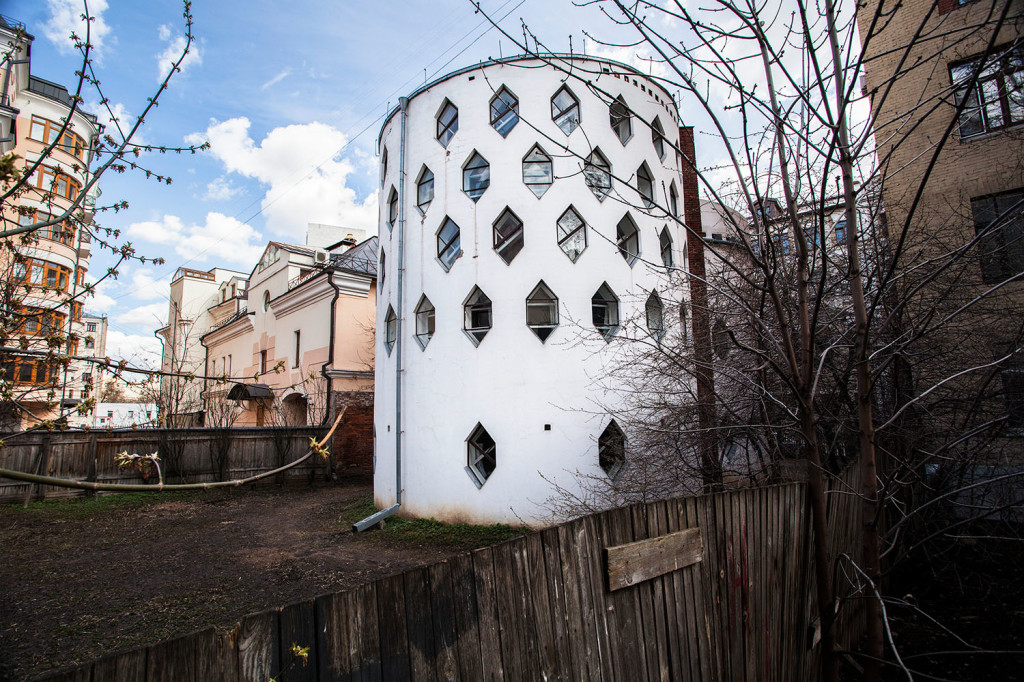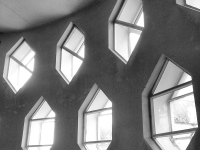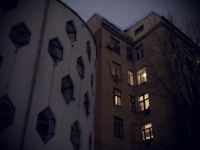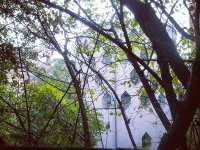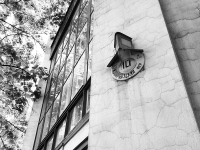Russian and English translations of the article “A Mosca nasce il Museo Melnikov. Sfrattando l’erede da casa sua” published in Artribune on November 6, 2014.
Text: Anna Kostina
Photos: Natalia Melikova
3 декабря Дом Мельникова открывается для посещения. История события.
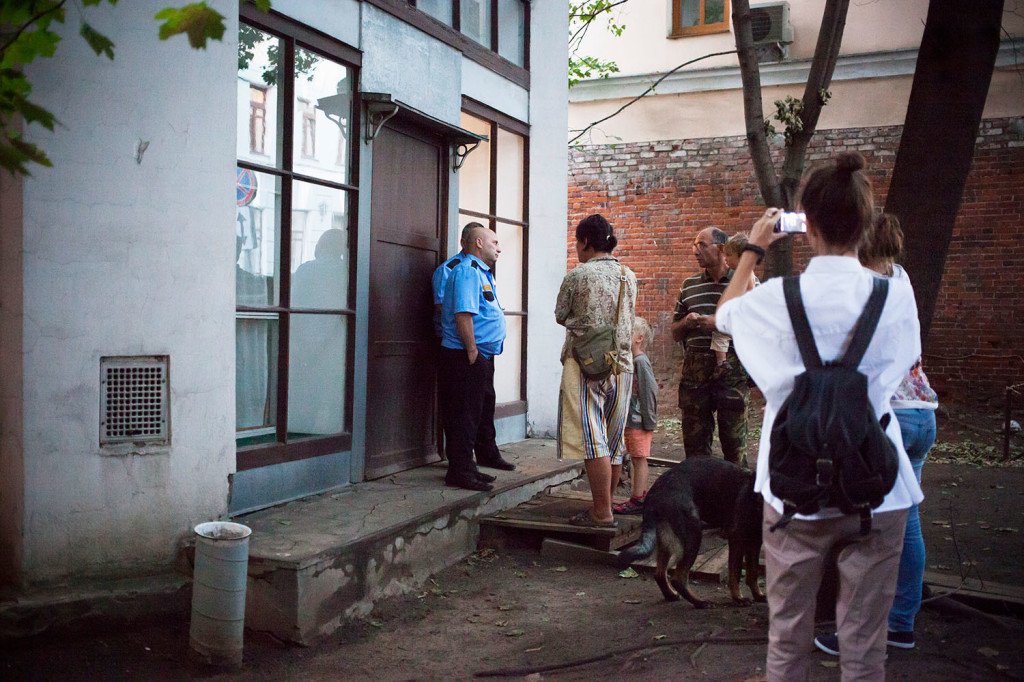
13 августа 2014
“Константин Мельников” – эта надпись и по сей день украшает фактически единственный в своём роде частный дом, построенный в советское время. Здание революционной, для своей эпохи, формы. Два находящих друг на друга цилиндра дают в плане округлую восьмёрку, 57 шестигранных окна и огромная стеклянная витрина центрального фасада. В период постройки своего дома в 1927-1929г.г., Мельников был в фаворе у Сталина, но это длилось не долго. Вскоре его обвинили в формализме. Остаток жизни он прожил фактически без работы. После смерти архитектор оставил дом своим детям: Виктору и Людмиле, каждому по цилиндру, разрушив таким образом единство и неповторимость концепции. Мельников не мог предвидеть, что сначала они, а затем и внучки – Екатерина и Елена – начнут оспаривать его наследство в московском суде.
Екатерина, дочь Виктора, жила в этом доме и хранила наследие отца и деда последние 18 лет. Она содержала дом на свою мизерную пенсию, била тревогу, когда рядом началось строительство нового супермаркета. Участок, как и фундамент, серьёзно просел, и образовались огромные трещины как внутри, так и на фасадах дома. Самое важное из всех творений Мельникова, едва ли не единственное, сохранившееся в оригинальном виде, находится в плачевном состоянии. Здание требует скорейшей реконструкции, которая постоянно откладывается по причине неразрешенного правового конфликта.
Фонд “Русский Авангард”, принадлежащий бывшему сенатору Сергею Гордееву, в прошлом приобрёл половину дома у наследников Людмилы Мельниковой и позднее передал её МУАР. В 2011, по прошествии слушаний и судебных разбирательств (обсуждению подвергалось завещание Виктора), другая четверть имущества перешла в собственность Государства, которое в свою очередь передало его под патронаж Московского Музея Архитектуры (МУАР). Екатерина, как исполнительница воли отца и владелица 1/8 части имущества, по-прежнему проживала в доме. Поначалу она надеялась, что с помощью Музея Архитектуры ей удастся реализовать мечту своего отца – “Музей Отца и Сына”, посвящённый работам Мельниковых: Константина – архитектора и Виктора – художника. Конечно, прежде всего необходимо было привести в порядок участок и реставрировать здание.
ВТОРЖЕНИЕ В ДОМ НАСЛЕДНИЦЫ
К сожалению, договорённость с МУАР так и не была достигнута, и руководство музея перешло в атаку. 13 августа, воспользовавшись отсутствием Екатерины, охранники, нанятые МУАР, взломали входную дверь и проникли в дом с целью инвентаризации предметов искусства. Последующие три месяца внучка Константина Мельникова жила под охраной. Екатерину не пускали на верхние этажи, чтобы она не мешала процессу насильной “музеефикации”. Деньги, отложенные ею на ремонт дома, исчезли.
“Ужасная ситуация, – обвиняет Екатерина. Дом, в котором я выросла, был захвачен. Охранники пользовались кухней, что-то готовили, разливя воду на пол, складывали мусор. Поселились там только затем, чтобы запретить мне подниматься на второй этаж”. Она не могла принимать даже родственников, изредка пропускали лишь врачей. Здание охранялось специально обученными собаками, готовыми наброситься в любой момент. 17 октября вышло распоряжение о выселении. Екатерину (75 лет) просто выгнали из дома.
Ей даже не дали возможности собрать личные вещи. Со слов Екатерины Каринской, ей передали через забор лыжный костюм, два одеяла и туфли. В момент интервью она находилась в квартире дочери. “Я осталась без одежды, без дома и без денег” – повторяет она. “Сложно отказаться. Если б не привязанность к национальному достоянию, я бы прожила жизнь иначе”.
Открытое письмо в поддержку Екатерины и ответ Музея
В поддержку Екатерины и в качестве обвинения в жёстком обращении, появилось общественное письмо, адресатом которого был Министр Культуры и Советник президента по делам культуры. “Мы, члены профессионального культурного сообщества России, искусствоведы и историки архитектуры, считаем несовместимым со статусом и миссией учреждения культуры действия Музея архитектуры им.А.В.Щусева…Считаем что на базе Дома Мельникова должен открыться государственный музей согласно завещанию В.К. Мельникова, однако вне всякого сомнения, ни один музей не может создаваться на основании сомнительных в правовом отношении действий, прямого насилия, а так же спешки. В планах Музея Архитектуры им.А.В. Щусева значится скорейшее открытие дома для посетителей ( в ноябре 2014г.), хотя это нельзя делать до проведения научной реставрации. Без реставрации дом может погибнуть в короткие сроки; такая позиция ГМА им.Щусева противоречит основной цели создания Музея Мельниковых – сохранению уникального здания”.
Ответ директора МУАР, Ирины Коробиной не замедлил себя ждать: “В отношении сотрудников ЧОПа, так взволновавших всех, то любая государственная собственность должна охраняться – либо полицией, либо ЧОПами…В 2011г. в присутствии замминистра культуры Андрея Евгеньевича Бусыгина Екатерина Викторовна клялась, что если Росимущество подпишет мировое соглашение, она покинет дом и позволит там создать музей. Два года было потрачено на разработку проекта мирового соглашения – был подготовлен безупречный документ, исключающий малейшие риски…И вот когда всё было готово, мировое соглашение было подписано серьезными государственными учреждениями – Минэкономразвития, Росимуществом, одобрено Минкультуры, “исполнительница завещания” его отвергла, несмотря на клятвенное завещание”.
Сотрудники музея теперь уже наверняка закончили инвентаризацию, составив опись около 5 000 предметов, принадлежащих Константину и Виктору. В первых числах декабря 2014г. Дом музей откроется для посетителей. Запись возможна по предварительной записи (по 5-7 человек в день). Казалось бы, мечта Мельникова близка к реальности, но какой ценой?
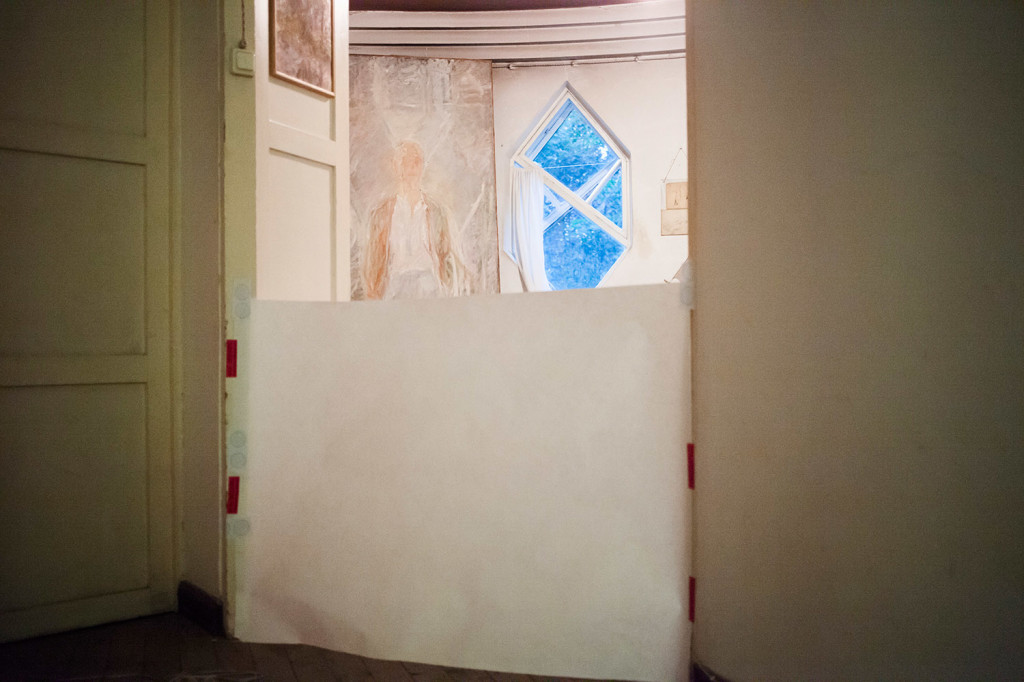
August 13, 2014
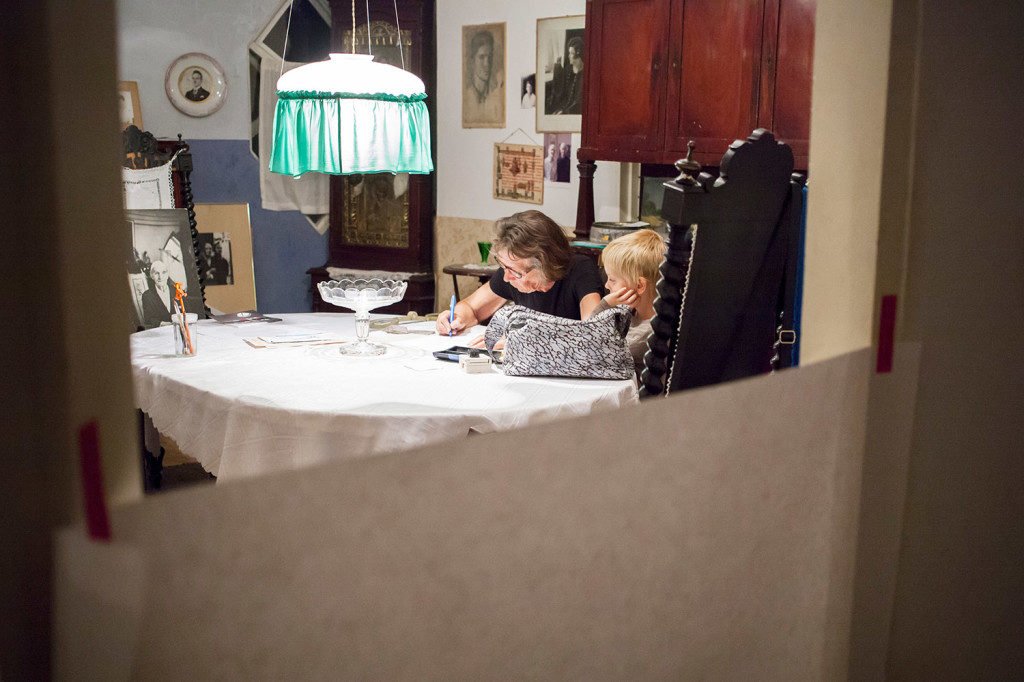
August 13, 2014
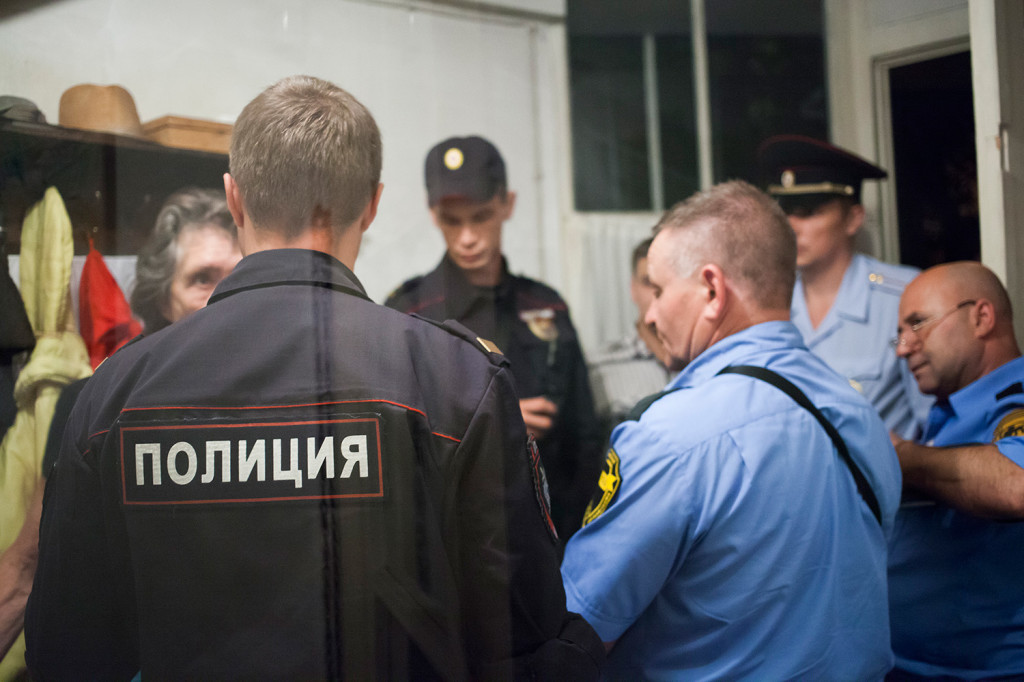
August 13, 2014
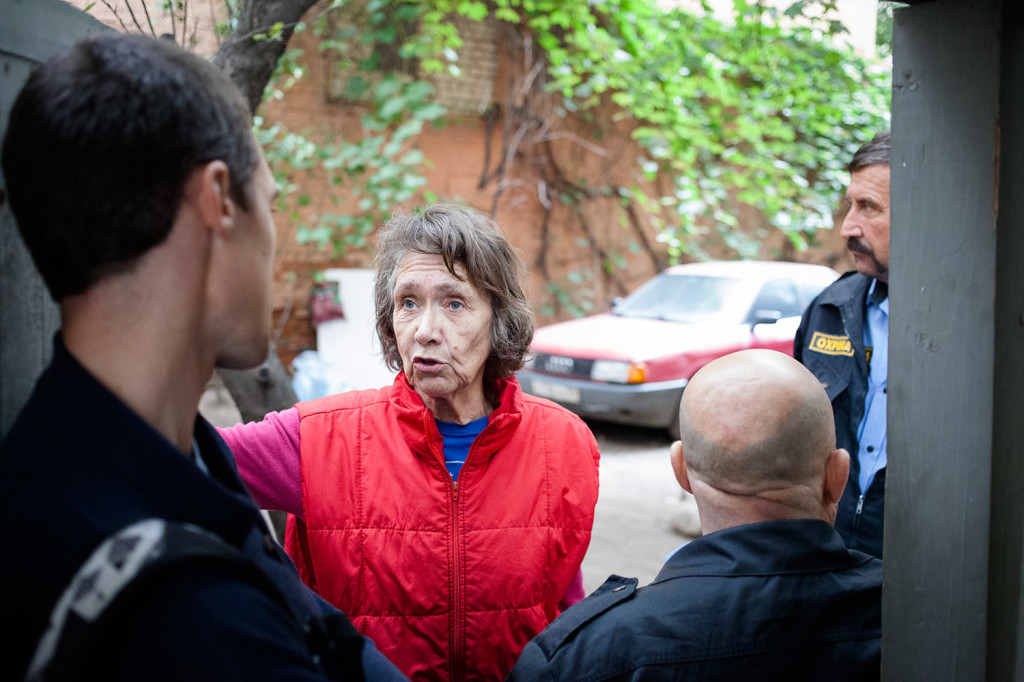
August 29, 2014

August 29, 2014
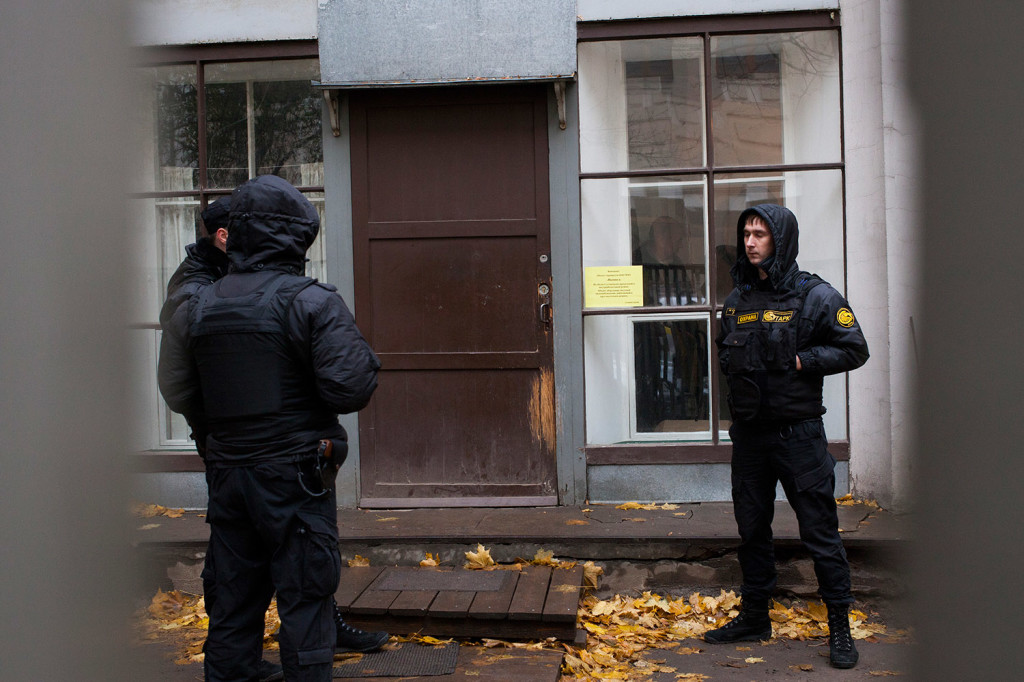
October 17, 2014
December 3 Melnikov House opens to the public. History of events.
“Konstantin Melnikov” – this inscription to this day adorns the practically one of a kind private house built in Soviet times. The building is revolutionary for its time and form. Two joined cylinders give a layout of a rounded figure eight, 57 hexagonal windows, and huge glass windows for the central facade. During the construction of his house in 1927-1929, Melnikov was in favor with Stalin, but it did not last long. Soon after he was accused of formalism. The rest of his life he lived with virtually no work. After the death of the architect the house was left to his children: Viktor and Ludmila, a cylinder for each, thus destroying the unity and uniqueness of the concept. Melnikov could not foresee that first they, and then also his grandchildren – Ekaterina and Elena – will challenge his inheritance in Moscow court.
Ekaterina, Viktor’s daughter, lived in this house and guarded the legacy of her father and grandfather for the last 18 years. She maintained the house on a meager pension, and sounded the alarm when the construction of a new multifunctional center began. The plot of land, as well as the foundations, have seriously subsided, and formed huge cracks both inside and on the facades of the house. The most important of all Melnikov’s works, perhaps the only one preserved in its original form, is in a lamentable condition. The building requires a restoration as soon as possible, which has been constantly postponed due to unresolved legal conflict.
The Russian Avant-Garde Foundation, owned by the former senator Sergey Gordeev, had bought half of the house from the heirs of Ludmila Melnikova and later gave it to the Museum of Architecture. In 2011, after hearings and trials (discussion subject to Viktor’s will), another quarter of the estate was taken over by the State, which in turn passed it to the patronage of the Moscow Museum of Architecture (MUAR). Ekaterina as executor of the will of her father and the owner of 1/8 of the property still lived in the house. At first, she had hoped that with the help of the Museum of Architecture she would be able to realize the dream of her father – “Museum of Father and Son”, dedicated to the works of the Melnikovs: Konstanin – the architect, and Viktor – the artist. Certainly, first of all it was necessary to put the territory in order and restore the building.
INVASION OF THE HEIRESS’S HOME
Unfortunately, agreement with MUAR had not been achieved, and management of the museum crossed over to the attack. On August 13, taking advantage of Ekaterina’s absence, security guards employed by MUAR, broke the door and entered the house with the purpose of making an inventory of the art works. For the next three months the granddaughter of Konstantin Melnikov lived under guard. Ekaterina was not allowed on the upper floors, so that she would not interfere with the process of forced “museumification.” Money that she had set aside to repair the house disappeared.
“A terrible situation,” denounces Ekaterina. “The house in which I grew up was seized. The security guards used the kitchen and prepared food there all the while spilling water on the floor, and accumulated garbage. They took up residence there only to prohibit me from going up to the second floor.” She could not even receive relatives as guests, only doctors were occasionally allowed in. The building was guarded by specially trained dogs, ready to pounce at any moment. On October 17 a decree of eviction was issued. Ekaterina (75 years old) was simply kicked out of the house.
She was not even given an opportunity to collect her personal belongings. From the words of Ekaterina Karinskaya, over the fence she was handed a ski suit, two blankets, and shoes. At the time of the interview, she was in her daughter’s apartment. “I was left with no clothes, no home, and no money,” she repeated. “It’s hard to refuse. If it were not attached to national heritage, I would have lived life differently.”
An open letter in support of Ekaterina and the Museum’s answer
A public letter in support of Ekaterina and with accusations of heavy-handed treatment was addressed to the Minister of Culture and to the Advisor to the President on Cultural Affairs. “We, the members of the professional architectural and museum community in Russia, art and architectural historians, consider the activities of the Schusev Museum of Architecture incompatible with the status and mission of cultural institutions… We believe that based on the Melnikov House a state museum should open according to V.K. Melnikov’s will, however, without a doubt, no museum can be established on the basis of legally dubious actions, direct force, as well as haste. The plans of the Schusev State Museum of Architecture include the speedy opening of the house to visitors (in November 2014), although this cannot be done until a scientific restoration is carried out. Without restoration the house can be lost in a short time; such a position of the Schusev State Museum of Architecture is contrary to the main purpose of the Melnikovs Museum – the preservation of a unique building.”
The response of MUAR’s director, Irina Korobina did not take long: “With respect to the private security employees that alarmed so many, it’s that any state property should be protected – either by the police or by private security guards … In 2011 in the presence of Deputy Culture Minister Andrei Busygin, Ekaterina swore that if the Federal Property Management Agency will sign the settlement agreement, she will leave the house and allow a museum to be created there. Two years were spent on drafting a settlement agreement – a scrupulous document was prepared, excluding the slightest risk … And when all was ready, the settlement agreement was signed by major government agencies – Ministry of Economic Development, Federal Property Management Agency, approved by the Ministry of Culture, “the executor of the will” rejected it, despite the sworn promise made.”
Museum staff have now certainly finished the inventory, having made an inventory of approximately 5,000 objects belonging to Konstantin and Viktor. In early December 2014 the Museum House will open to the public. Registration is possible by appointment (5-7 people per day). It would seem that Melnikov’s dream is close to becoming a reality, but at what cost?
